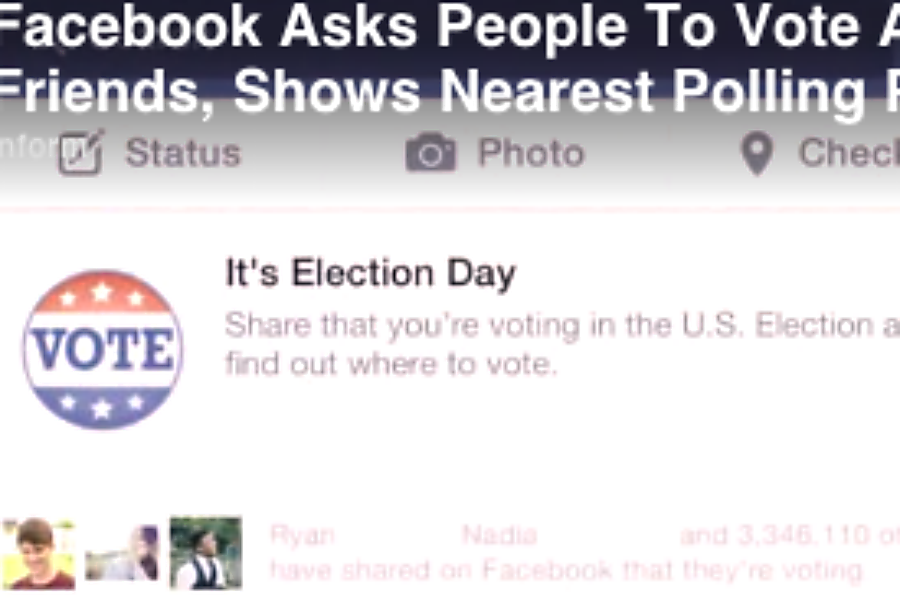How did Facebook influence voter turnout?
Midterm elections are over, favor for the GOP swept through the nation, and voter participation has been at an all-time low. But how did Facebook fare in rousing eligible voters to go out to the polls?
“On the megaphone, 7 million people on Facebook shared that they voted,” says Andy Stone, policy communicator for Facebook, in an e-mail. This is about 7 percent of the 90 million registered voters, assuming that the registered voter population hasn’t changed significantly since 2012.
While the “I voted” status sticks out as much as the stickers given out at polling locations, there were far more interactions and shares regarding election topics than actual "I voted" statuses.
“On Election Day, November 4, through the end of the day, 27 million people on Facebook in the United States made more than 85 million interactions regarding the midterm elections,” Mr. Stone says.
That includes likes, shares, and comments on the election and election-based topics. The most-discussed issues were marijuana, taxes, and the Affordable Care Act.
Despite the amount of engagement on Facebook, the demographics reflect a general apathy among young people when it comes to voting. Of the 7 million that shared that they voted on Facebook, only 10 percent were 18- to 24-years old.
According to exit polls conducted by the National Election Pool, 13 percent of voters are ages 18 to 29, whereas they accounted for 19 percent of the total vote in 2012. Historically, engagement for presidential elections are generally higher, engaging about 54 percent of eligible voters.
Even more concerning is the lack of diversity in voters at the midterm polls, which might give some insight into the spate of Republican victories this year. The Pew Research Center’s findings indicate that young voters consistently favor the Democratic Party by a large margin and they didn’t show up quite as much during the midterms (compare to 19 percent during 2012’s presidential election) and voters older than 65 consistently favor Republicans, and they accounted for 22 percent of voters this time around (compare to 16 percent during 2012).
Smart phone and social media usage was surging during the 2014 elections among both parties and most age groups. Pew’s findings indicate that there’s a growing number of users following political figures to keep up with news and campaign events. Democrats and Republicans are reaching parity in social media usage, a big change from the disparate engagement on Twitter and YouTube that President Obama racked up during his 2012 campaign compared to Mitt Romney. Those tools hold the power to inform, but not enough to galvanize, it seems.





